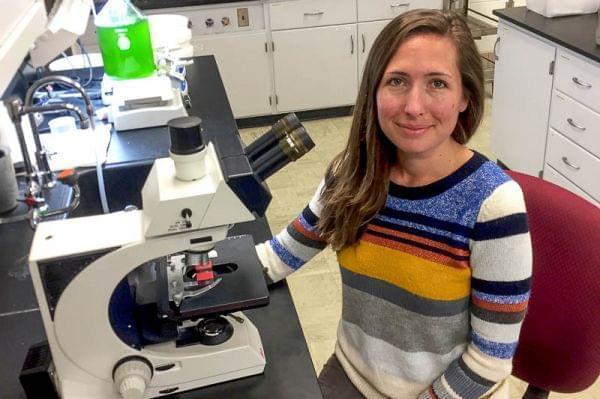Curiosity plus old-school science produce new understanding

Whether or not Daphnia recover from certain fungal infections probably matters very little to you in your day to day life; indeed, if you’re like most people, the word “Daphnia” itself has no clear meaning for you. So, let’s start there.
Daphnia is the name of a genus of tiny aquatic crustaceans that are also known by some as water fleas. Like larger crustaceans you may be familiar with, such as shrimp, they have segmented legs, and their bodies are protected by a rigid exoskeleton. But even the largest species of Daphnia grow no more than five millimeters long, so could easily rest atop a pencil eraser. Since the late 1800s, Daphnia have also been useful in studies conducted by parasitologists, scientists who study parasites, their hosts, and interactions among them.
I learned this from Tara Stewart Merrill, a PhD candidate at the University of Illinois who is interested in Daphnia because studying them enables her to better understand the processes that influence disease transmission, including why diseases invade some populations and not others, and why resulting disease epidemics vary in their size or duration
But that’s not what this commentary is about. This commentary is about an interesting discovery Stewart Merrill made along the way, and here’s where we get back to Daphnia and fungal infections.
In her study of the scientific literature on disease transmission among Daphnia, she observed a tendency among among disease ecologists to discount the idea that simple organisms—such as Daphnia—mount complex defenses against infection the way more complex organisms do. In some studies using Daphnia the assumption of no recovery is stated directly, while in others it is simply implicit in how the analyses are conducted and how mathematical models are structured.
In this context, it’s worth noting that the conventional wisdom about Daphnia not recovering from fungal infection traces all the way back to observations made in the 1880s by Élie Metchnikoff, a Russian scientist whose work on immunity earned him joint credit in a Nobel Prize.
Wondering whether, after the passage of 130-some years, a new set of observations, conducted according to the scientific standards of our time might produce a more accurate picture of what happens when Daphnia dentifera meets the fungus Metschnikowia bicuspidata, Stewart Merrill decided take on the task herself. After all, she remembers thinking, “if someone could do this with a microscope in 1884, I can do better today.”
For her study, Stewart Merrill isolated about 500 Daphnia in individual tubes containing a solution loaded with fungal spores, which the Daphnia, being filter feeders, ingested. Then, over a period of 10 days, she pulled out samples to examine under a microscope what was going on inside them. What she saw was an elegant and complete life cycle (of the fungus) unfolding in front of her eyes, one that scientists had not previously paid attention to. In addition, she witnessed a life and death battle between host and parasite, where the host was clearly fighting back, and that sometimes it was able to clear itself entirely of infection.
That may not mean much to you and me directly, but it does have important implications for disease ecologists, whether they study Daphnia, mosquitos, or snails. And the work of disease ecologists is key to enabling people to predict and manage the spread of diseases, including some that are very close to home for us, such as West Nile virus and Lyme disease. It also underscores the importance for scientists of doing clean and careful work, and of going back from time to time to verify results and assumptions.

